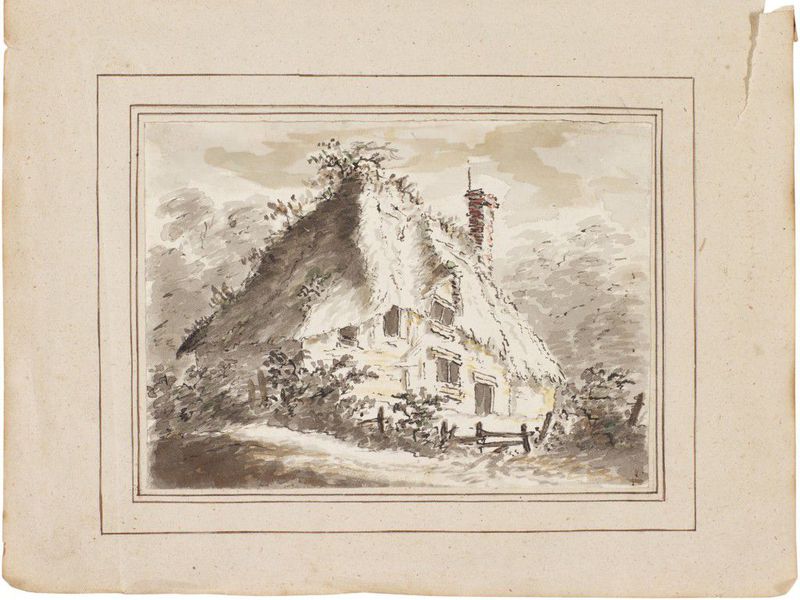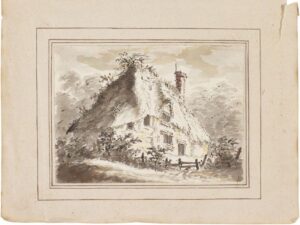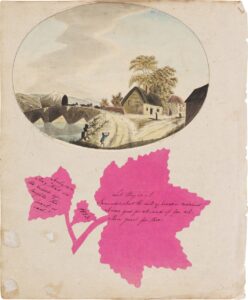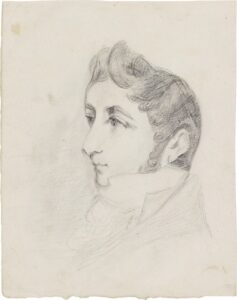
Early John Constable Sketches Spent 200 Years Forgotten in a Family Scrapbook

Today, John Constable’s depictions of gray cumulus clouds; overgrown, verdant foliage; and cow-filled, bucolic pastures rank among England’s most renowned 19th-century landscape paintings. But as Mark Brown notes for the Guardian, the British painter was a bit of a late bloomer, only beginning formal artistic training in his mid-20s.
A newly discovered trove of Constable’s early sketches offers additional insights into the evolution of his artistic process. Set to be auctioned by Sotheby’s in an upcoming sale, the four drawings spent two centuries hidden away in a “very characterful” scrapbook owned by the Masons of Colchester, who were related to the artist by marriage, Mark Griffith-Jones, a Sotheby’s specialist in British watercolors and drawings, tells Brian Boucher of Artnet News.
The auction house estimates that the lot included in an online sale scheduled for November 27 to December 4 will fetch around $32,000 to $37,400.
Constable created the earliest rediscovered work, A Rural Landscape (1794) when he was just 17. Along with the three later sketches, it eventually ended up in a Mason family album filled with engravings, dried oak leaves, poems, notes on current events, and other assorted scribblings.
Speaking with the Guardian, Griffith-Jones says the scrapbook, which was compiled between 1794 and 1862, “is full of all sorts of weird and wonderful objects and images.”
Two of the Constable drawings feature quotidian scenes of the countryside. In A Rural Landscape, petite people too small for viewers to make out their individual facial features wander around a row of houses and a bridge.

Another watercolor work shows a dilapidated house in the country. Titled The Deserted Cottage (c. 1797), the sketch is the original drawing for Constable’s sole surviving etching from the period. Though the light ink wash technique and fluid lines used to render the house are delicate and the contrast between light and shadow skillful, the scene is clearly the work of a young artist.
The final two drawings are pencil portraits of Constable’s younger brother, Abram, and cousin Jane Anne Inglis, née Mason. Both correspond with later oil paintings.
According to the Telegraph’s Mike Wright, Abram volunteered to run the Constable family’s milling and shipping businesses so that his brother could pursue a career in the arts. At the time of the soon-to-be auctioned works’ creation, Constable was working at his family’s windmill. Five years after sketching A Rural Landscape, he began formal training as an artist at the Royal Academy Schools (now the Royal Academy of Arts).

After enrolling at the prestigious academy, Constable’s work flourished; he painted large landscapes that depicted the English countryside as he knew it, operating under the idea that he “should paint [his] own places best,” wrote curator Elizabeth E. Barker in a 2004 essay for the Metropolitan Museum of Art. But as Wright notes for the Telegraph, Constable only refined his style and painted such renowned works as The Hay Wain (1821) and The Vale of Dedham (1828) later in life.
Constable’s drawings evidently have lasting value. In 2014, reported BBC News at the time, seven of the artist’s sketches dated to between roughly 1815 and 1818 sold for £187,000 (£204,000 today, or around $270,000 USD).
“It has been an exciting journey and I’m sure the art world will be interested in the discovery, museums as well as collectors,” Griffith-Jones says to the Guardian. “This is a rare opportunity.”
smithsonianmag.com


